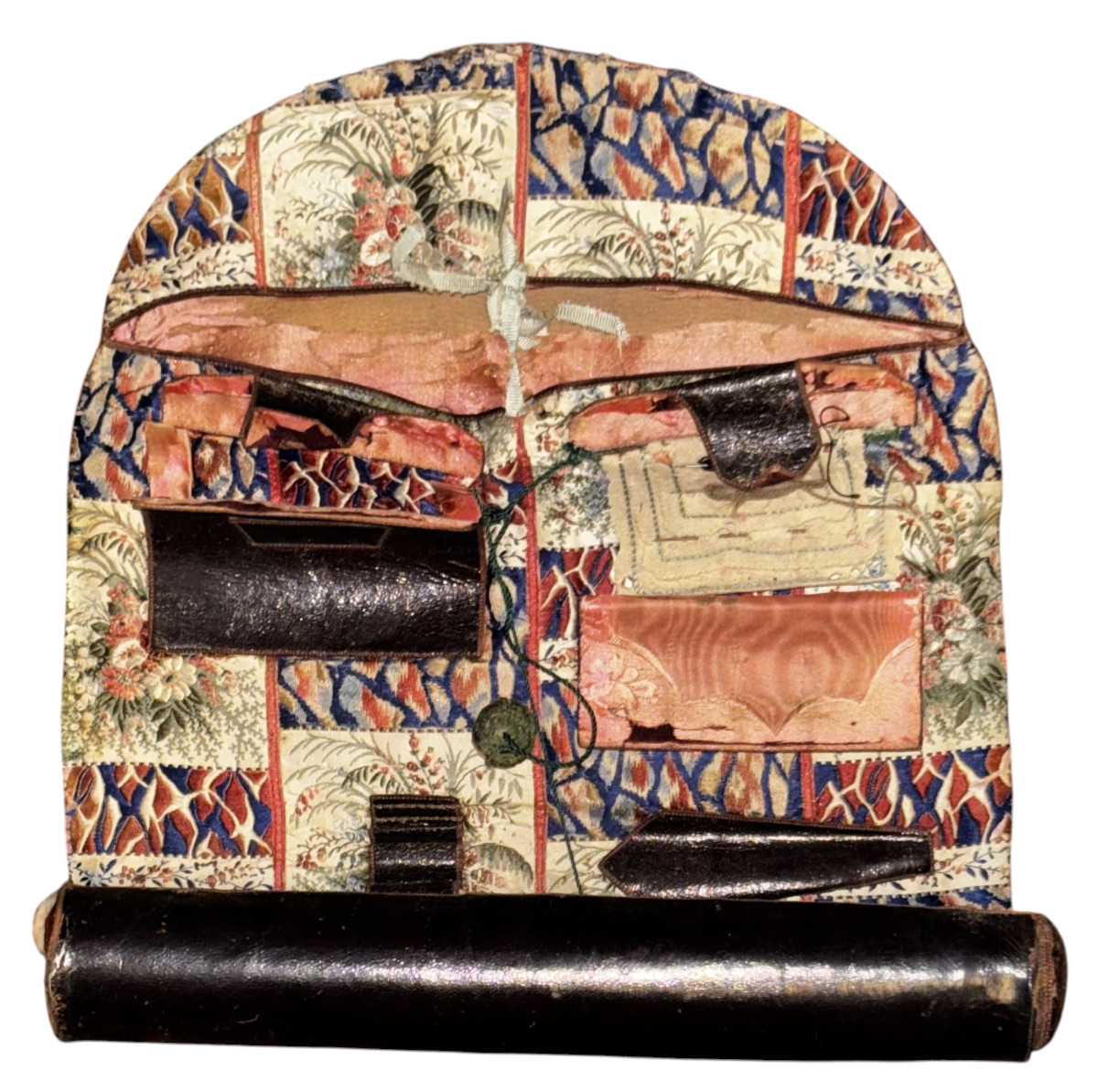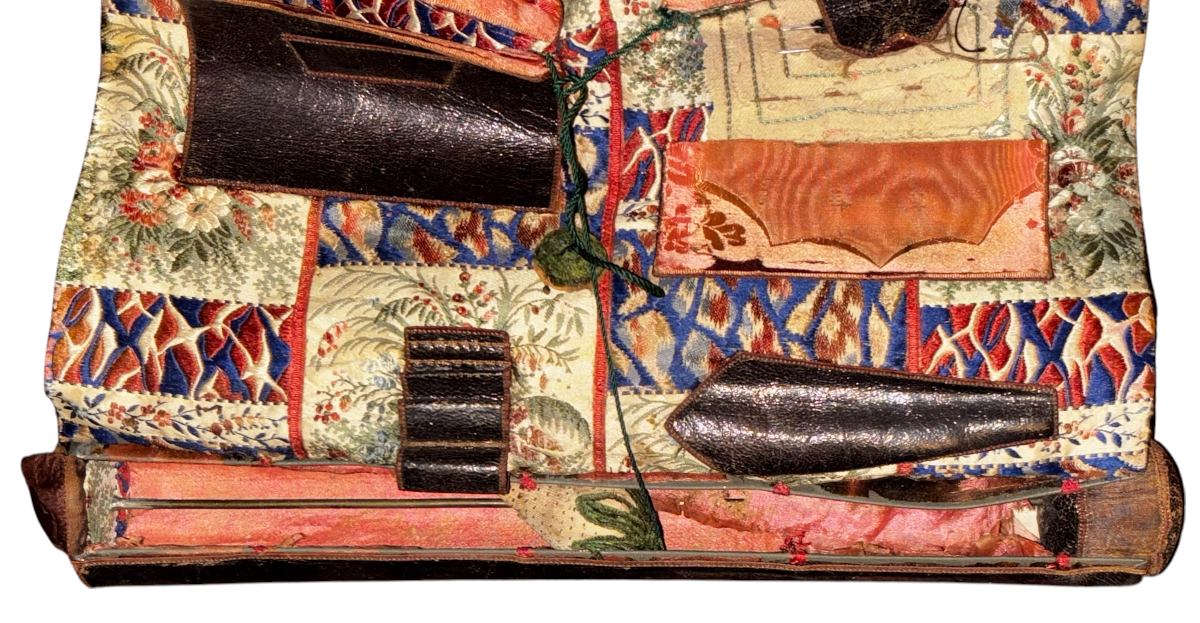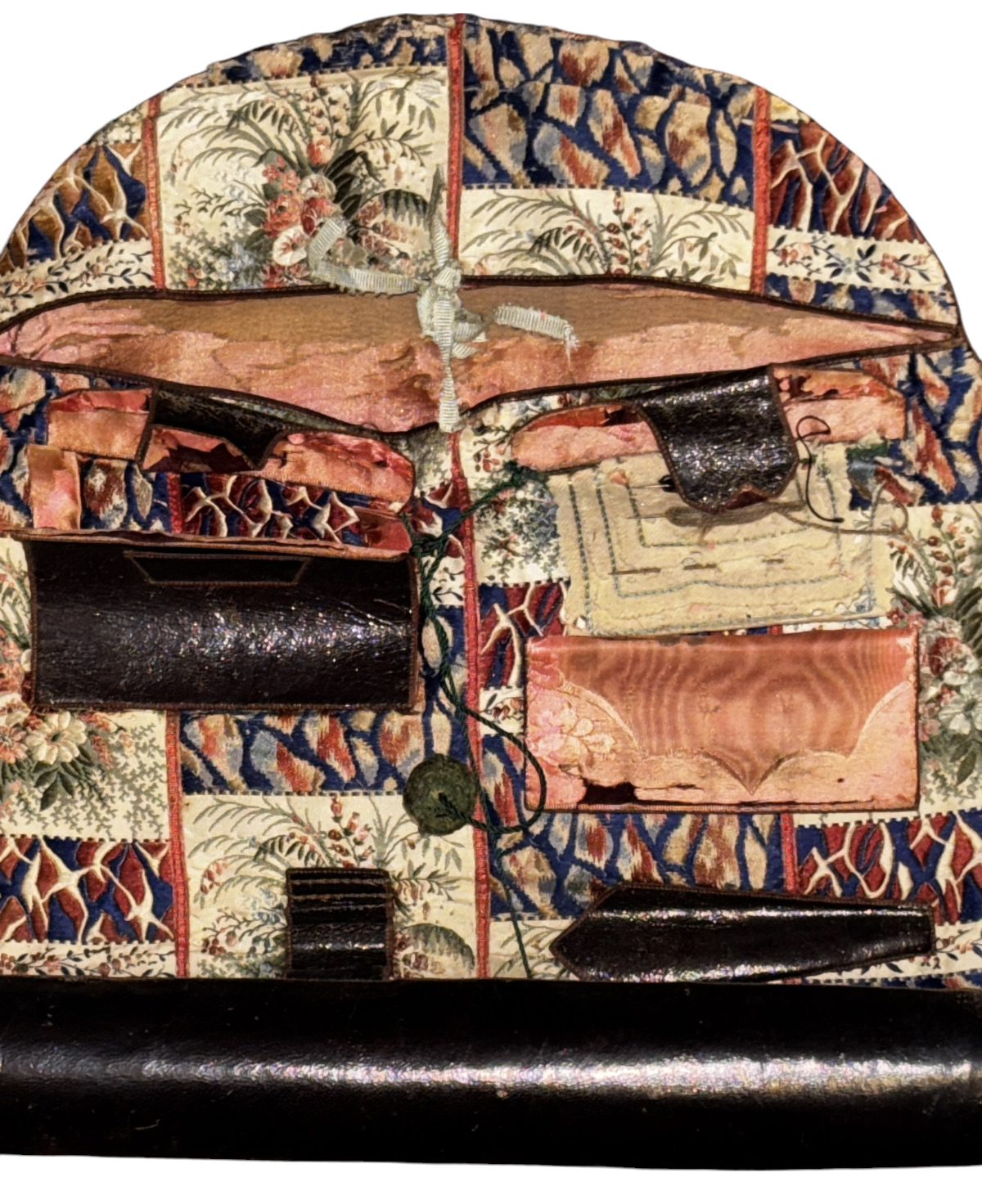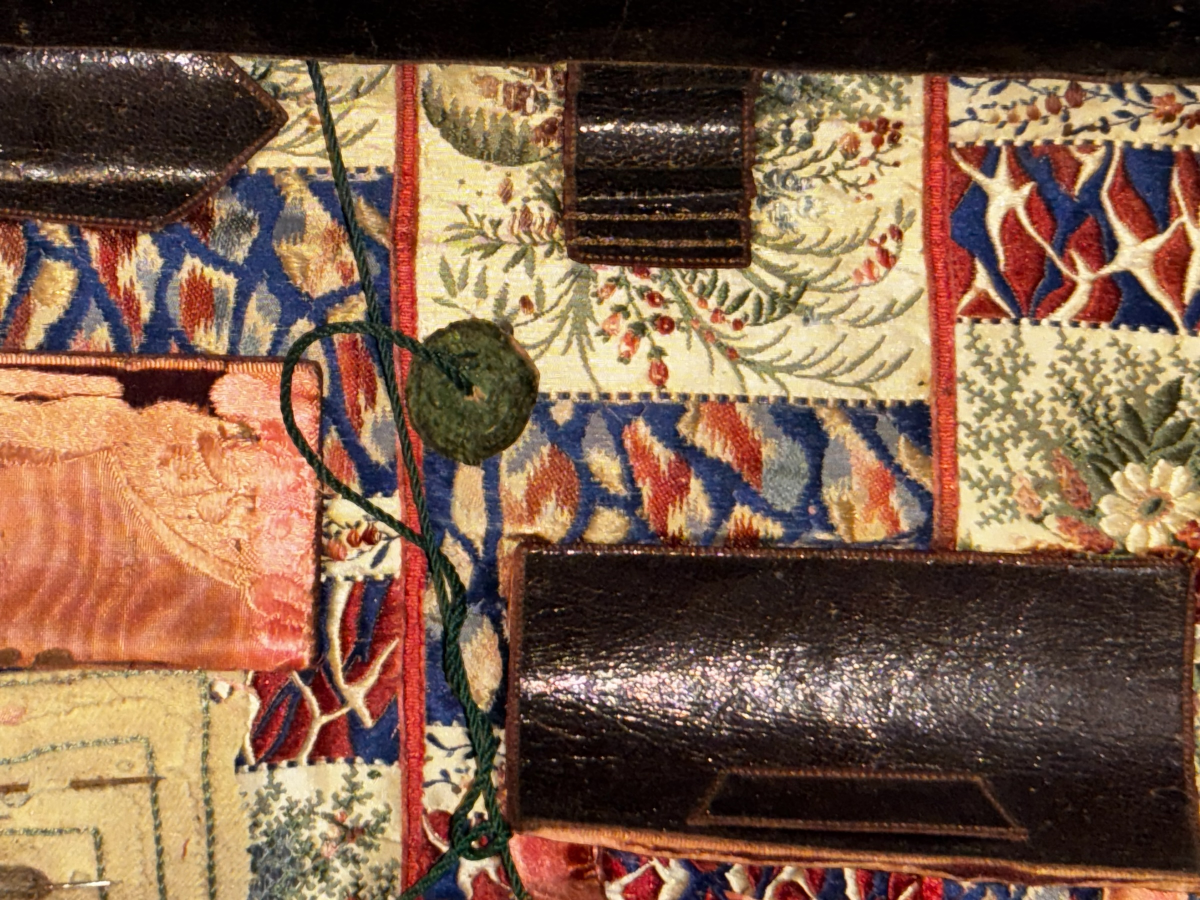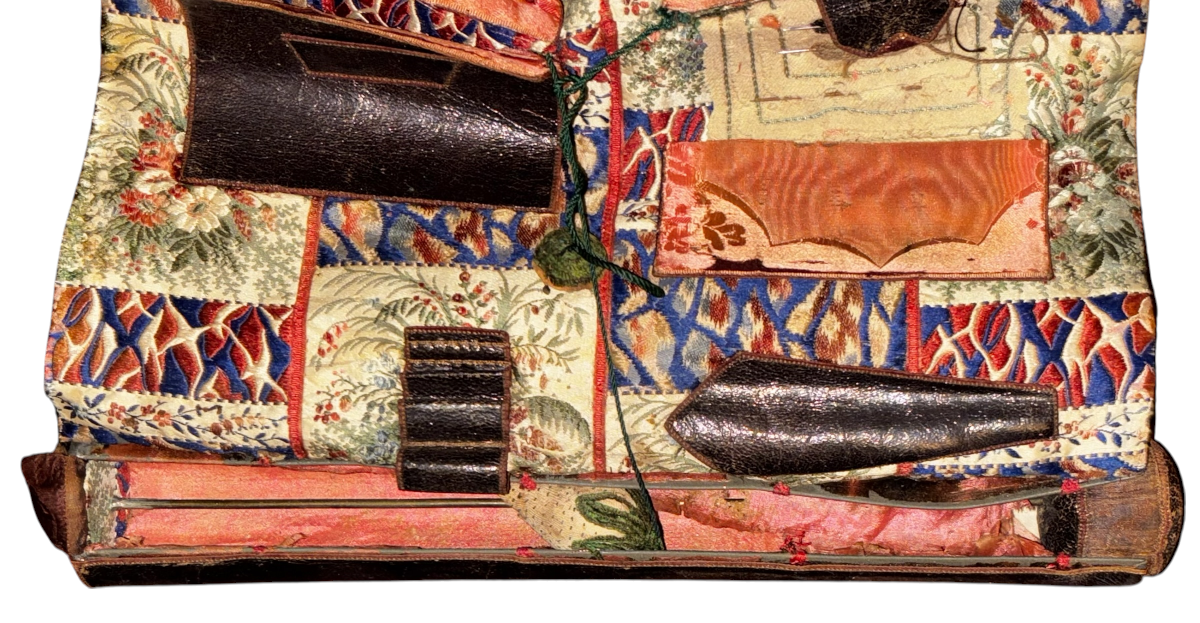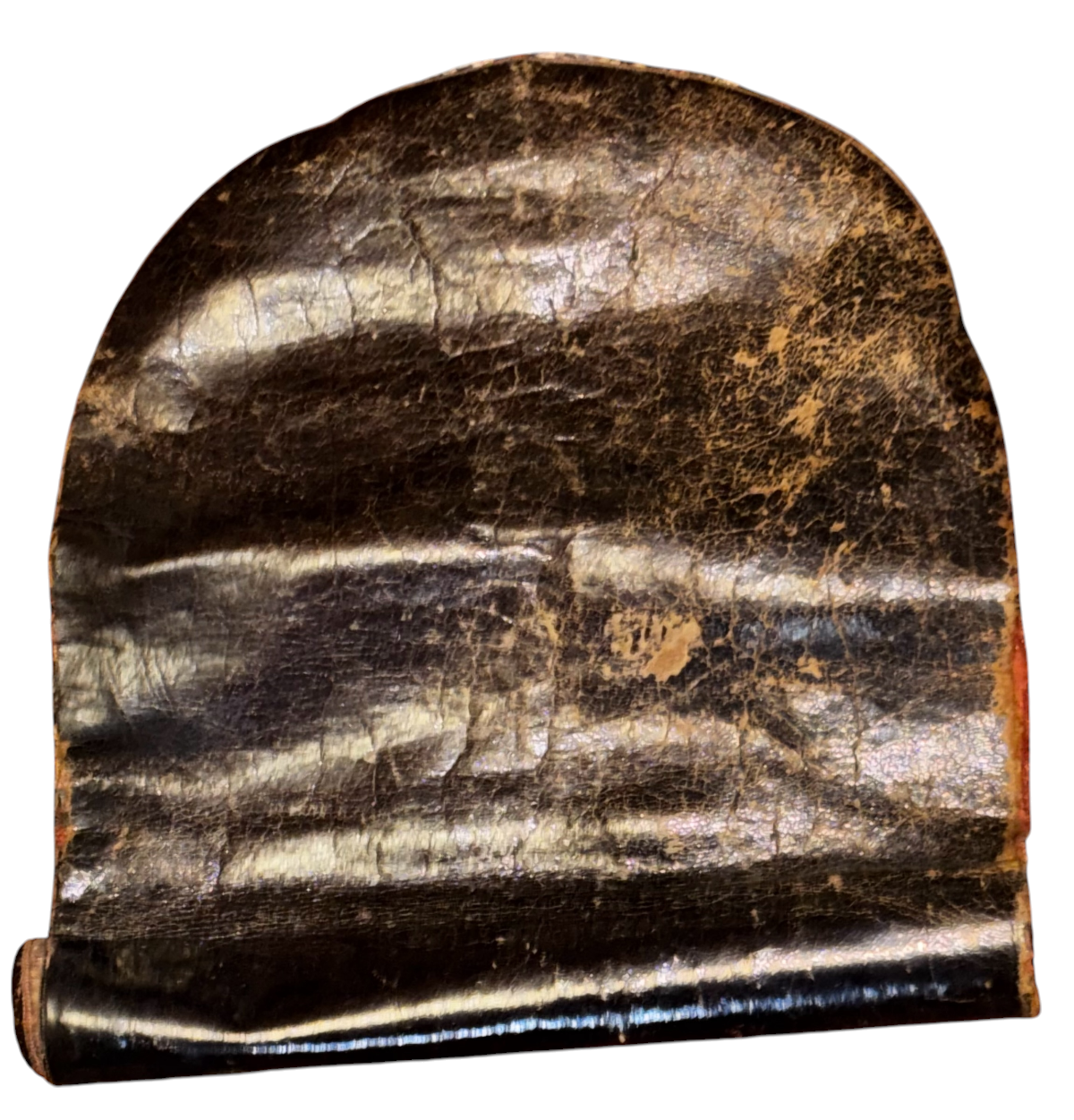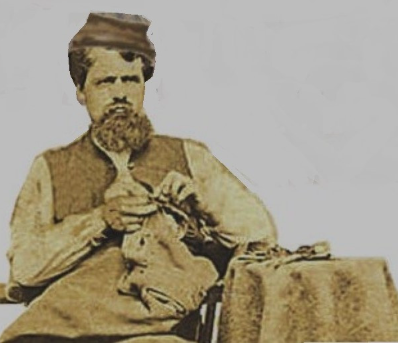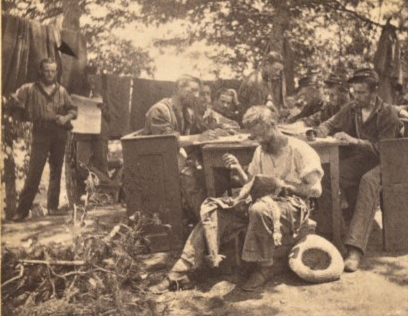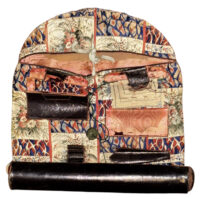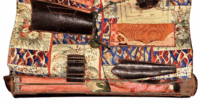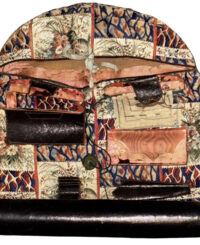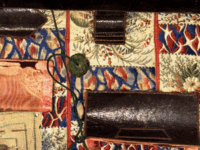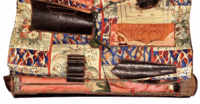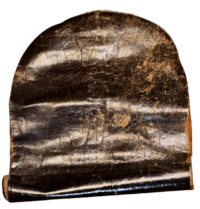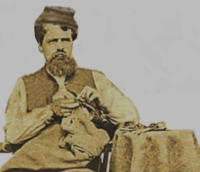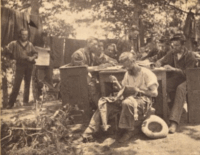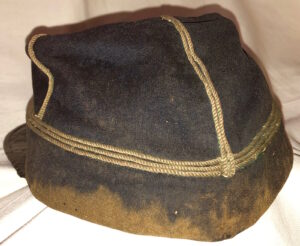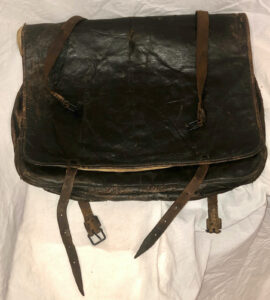Elaborate Civil War Soldier’s Sewing Kit or Housewife
SOLD
Elaborate Civil War Soldier’s Sewing Kit or Housewife – Many soldiers carried a “housewife,” or sewing kit, containing needles, thread, thimbles and other items for mending clothing. Repairs made by soldiers in camp could include sewing on buttons and insignia, mending tears, and even replacing the lining of jackets. We have had numerous examples of these oft-carried sewing kits; this example is one of the largest and most elaborate ones we have had; it is also quite colorful in construction, with the interior lined with multiple swatches of floral motif cloth, almost quilt-like. Along the bottom of the kit is a tin or sheet iron tube, comparable to Civil War period writing kits – it’s lined with a pinkish silk and reinforced with a rod that is soldered to each interior, tin disk-shaped end – the exterior side of these ends had a leather covered pad – one remains, the other is now missing; the tube could hold various sewing implements, thread, thimbles, etc. The floral motif cloth lining has several leather pockets or compartments, also to house sewing implements. The exterior of the housewife is constructed of a thin, brown leather; the entire kit is made so that it can be rolled up and placed in a soldier’s haversack or knapsack. Overall, the kit is in fine condition, with some rending or weakness to some of the silk aspects. This is a superior example of one of the personal necessities of Civil War soldier life.
Measurements: L – 8.75″; W – 9″
A Soldier and His Housewife
Posted on July 18, 2022
We’ve all seen them behind plexiglass in countless museums. Strips of fabric sewn together, complete with pockets and flaps to hold sewing notions like spools of thread, needles, and spare buttons. Housewives, as they were called, were as varied and unique as the soldiers who carried them. Often made by wives, sisters, or mothers for the men who went off to war, these colorful housewives were intended to equip them with everything they needed to mend their own clothes. The compact and flexible nature of the design allowed the men to roll them up and stuff them in their pockets or knapsacks for easy storing. Some soldiers would excel at the task of mending that was outside of their “sphere” and others would struggle to thread a needle throughout the war.
When it comes to understanding a little of the soldier’s experience, I often turn to John Billing’s book, Hard Tack and Coffee. In it, he explains how the men put their housewives to good use – or not:
“In the department of mending garments each man did his own work, or left it undone, just as he thought best; but no one hired it done. Every man had a “housewife” or its equivalent, containing the necessary needles, yarn, thimble, etc., furnished him by some mother, sister, sweetheart, or Soldier’s Aid Society, and from this came his materials to mend or darn with.
Now, the average soldier was not so susceptible to the charms and allurements of sock-darning as he should have been; for this reason he always put off the direful day until both heels looked boldly and with hardened visage out the back-door, while his ten toes ranged themselves en echelon in front of their quarters. By such delay or neglect good ventilation and the opportunity of drawing on the socks from either end were secured…
Then, there were other men who, having arranged a checker-board of stitches over the holes, as they had seen their mothers do, had not the time or patience to fill in the squares, and the inevitable consequence was that both heels and toes would look through the bars only a few hours before breaking jail again.
But there were a few of the boys who were kept furnished with home-made socks, knit, perhaps, by their good old grandmas, who seemed to inherit the patience of the grandams themselves; for, whenever there was mending or darning to be done, they would sit by the hour, and do the work as neatly and conscientiously as any one could desire. I am not wide of the facts when I say that the heels of the socks darned by these men remained firm when the rest of the fabric was well spent.”

